Doable Ideas for Compiling Your Life/Family History Part 2
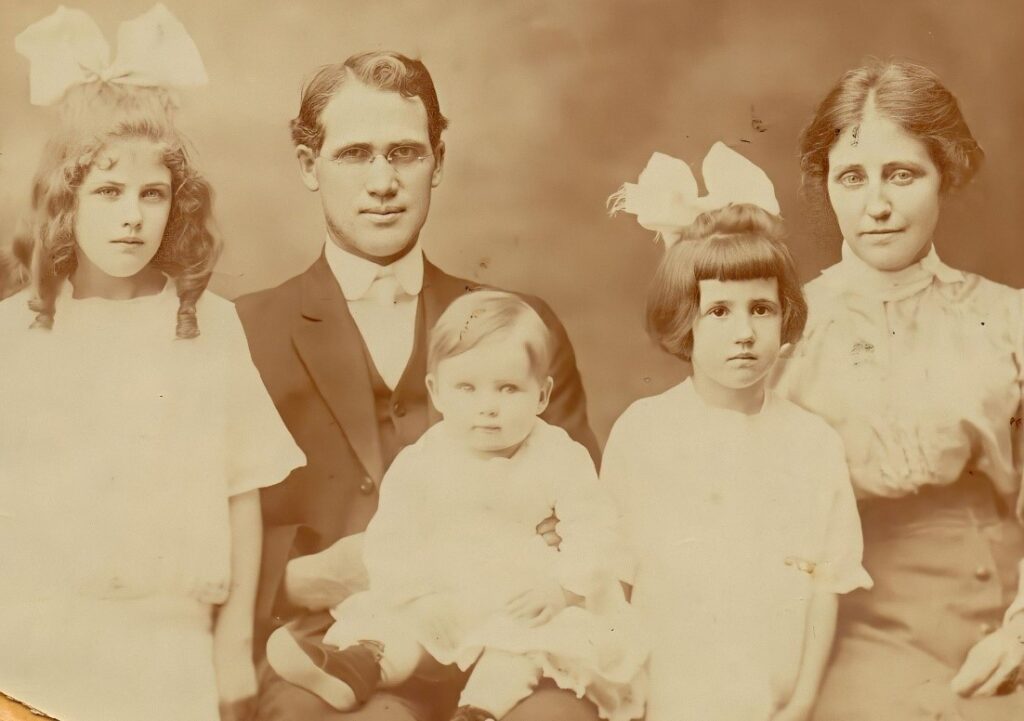 22
22Sep
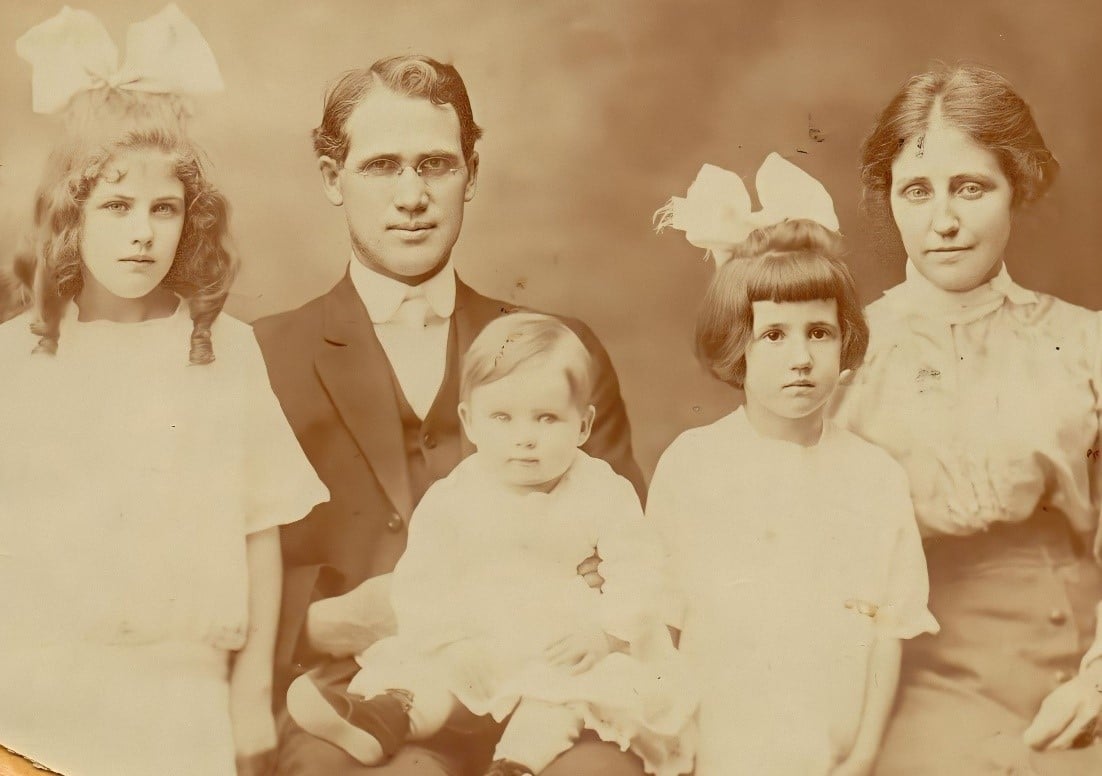
Doable Snippets Approach Inspires a Paradigm Change!
Part 2 is a continuation of my sharing how to break down the grand, overwhelming task of putting together a book on your life or family story into doable steps. When I presented this approach in a family history class I was teaching, I challenged everyone to think outside the box, well more specifically, outside the “book,” and adapt a sampler approach—to think of it as putting together a representative collection of elements—snippets—not an A-Z narrative with all the trimmings! As I stated in Part 1 of this blog, my goal is to inspire a paradigm change in others who are overwhelmed and incapacitated by the dreaded “B” word (book) that will empower them to record their unique, priceless story for posterity’s sake!
Another angle with the snippet approach is that readers of today typically seem to be bored and put off by long stretches of text and often go AWOL because of them. For example, one man told me when he began to read a friend’s life story, and it was uninterrupted text, after reading a few paragraphs, he politely closed the book and never opened it again. The thing I noticed that worked amazingly well in an Arizona cowboy’s family history book that I helped with, was that he included a variety of interesting and unique elements—snippets--that broke up the text. It seems imperative to do this to ensure appeal and interest—to make your life/family story reader-friendly!
Snippet Approaches to Compiling a Life or Family Story
- Timeline – First, put in your birth date, then add dates of other significant life events. You can also use timelines to illustrate other date-related info about your life, i.e., professional career. Just think how much info this one element can reveal about your life.

- Maps – Using maps is a creative, efficient way to display a lot of information.
- Migration – All the places you’ve lived. You can print a map of where you/your ancestors have lived and fill in your/their personal info.
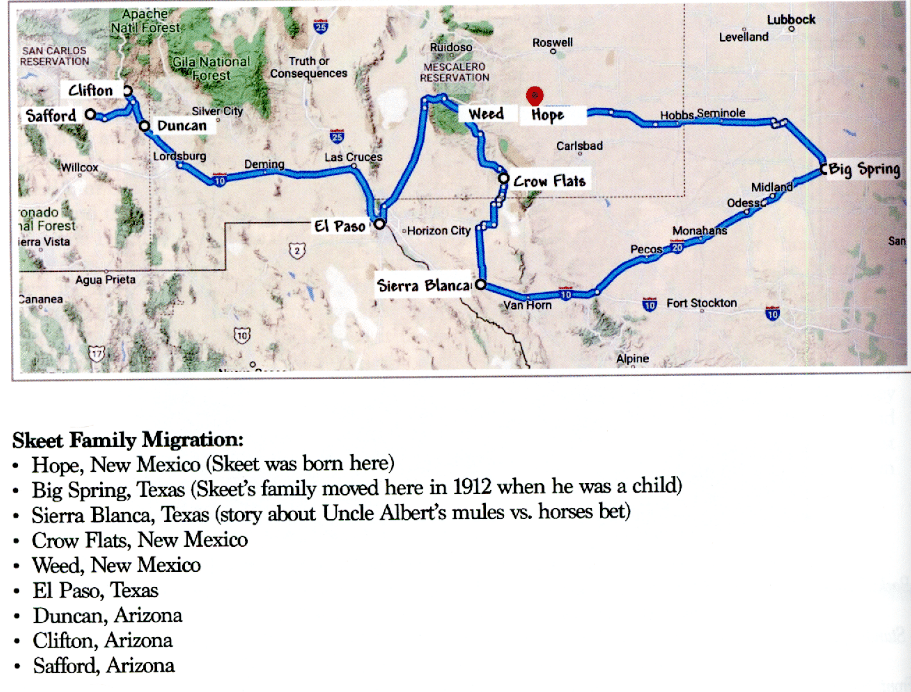
-
- Locations of Living Relatives’/Ancestors’ Places of Residence
- Travel/Family Vacations
- Locations of Family Reunions
- Military Service Locations
- Locations of Birthplaces of Family Members
- Places – Significant landmarks.
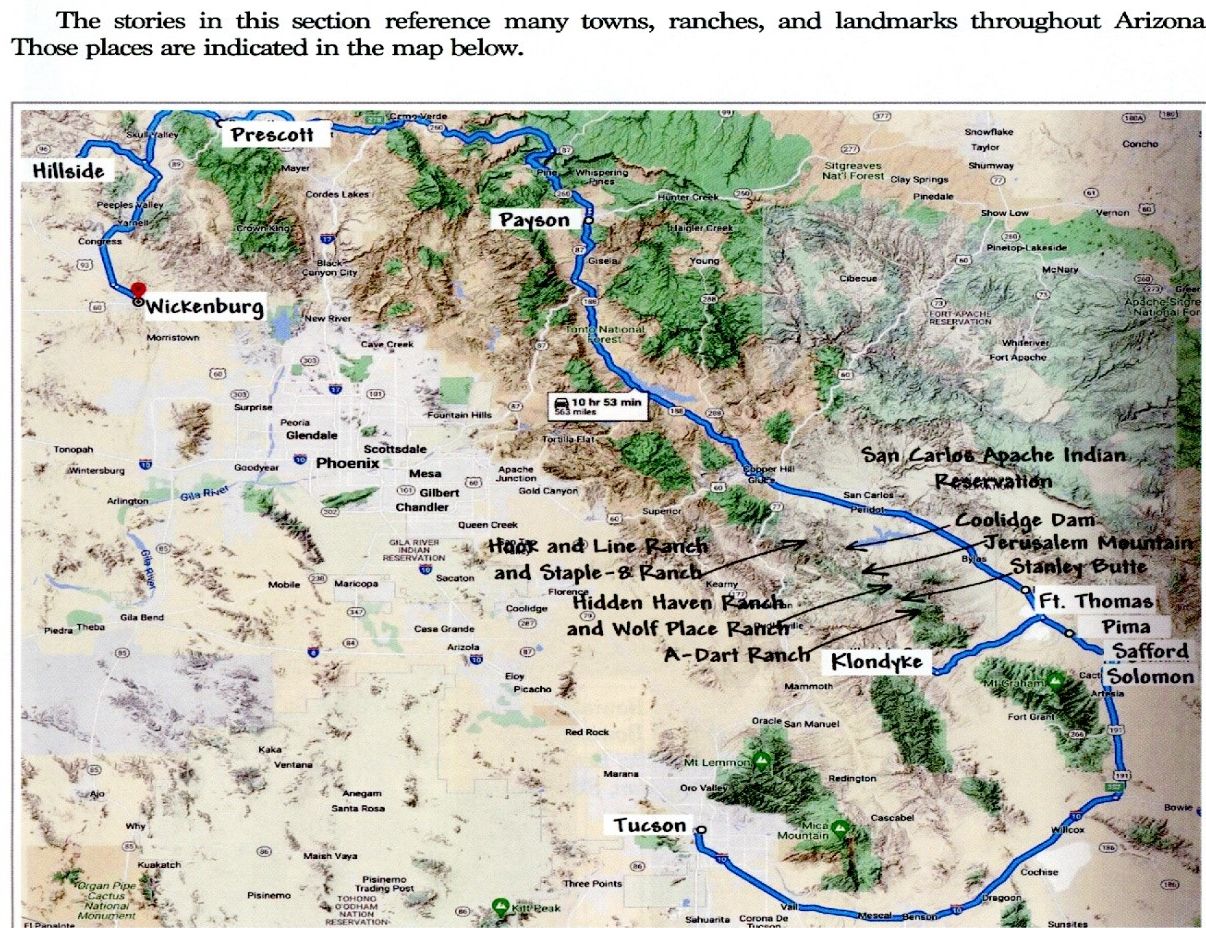
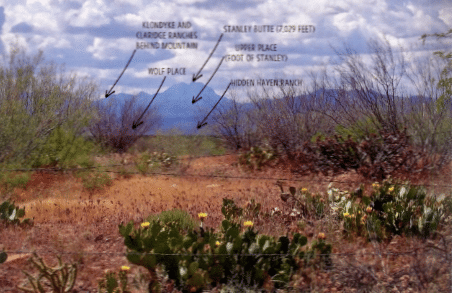
- Photo album with Captions – Simply add details about the photos in your photo albums to record your family history in photos!
- Family Heirloom Photos with Captions
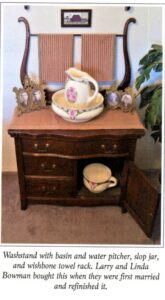
- Stock Photos of Items Referenced in Text – Breaks up text and adds interest. Before you use any images on the Internet, be sure to note if they are copyrighted/licensed--cost money! There are some free stock photos, i.e., Wikimedia Commons.
- Life Narratives/Stories Written by Ancestors or Family Members
- Family Memoirs/Journal or Diary Entries
- A - Z Chronological Notebooks - 1) Childhood; 2) Teen Years; 3) Young Adulthood; 4) Middle-age Adulthood; 5) Golden Years. Label blank notebooks with each of these categories, then whenever you have downtime, like at appointments, jot things down from memory.
- Favorite Scriptures with Commentary Notebook
- Ancestor/Family Members Notebook – At the top of each page of a blank notebook, place the name of a family member, then jot down things about that person--special experiences/memories you remember. Also include family stories that have been handed down. The Memories Tab on FamilySearch is a great source of this type information.
- “Kids Say the Darnedest Things” Notebook – Record cute, funny, or profound things your children/grandchildren say!
- Lessons Learned from My Parents Notebook – This was my favorite element of the cowboy’s book that I helped with! These profound mom and dad lessons touched my heart deeply and resonated in my soul. They made me think of the lessons my mom and dad taught me–tender memories. And, they also made me think about how we definitely need to similarly be teaching life lessons to our children and grandchildren.
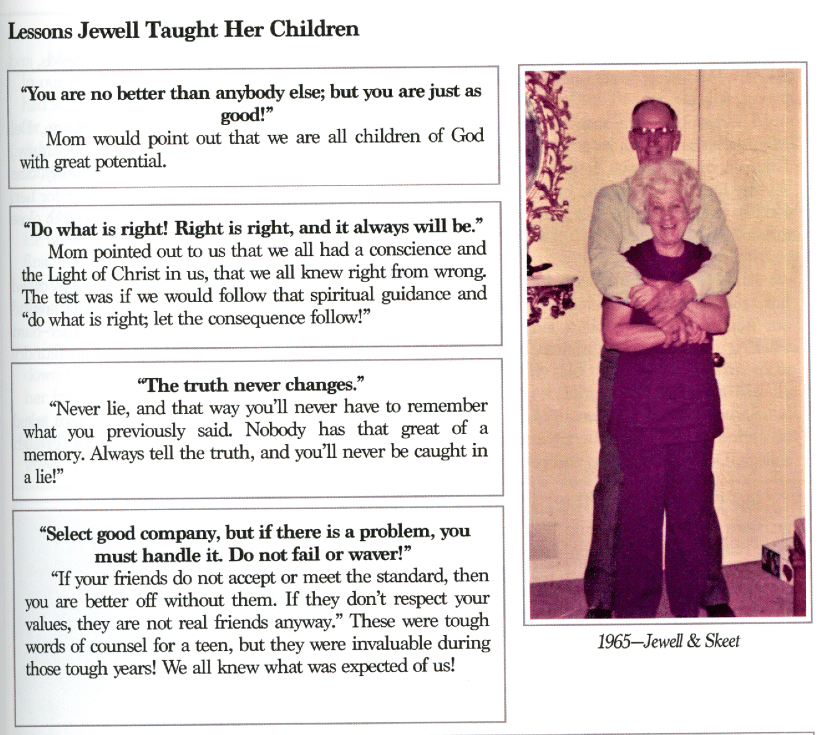
- Family Interview Notebook - When visiting with relatives either in person or on the phone, ask them questions about their lives and make a recording to transcribe or take notes. You can find questions for interviewing family members on the Internet, i.e., https://support.ancestry.com/s/article/Questions-for-Interviewing-Family-Members?language=en_US.
- Inventory of Items of the Day with Pictures – Make a list of items in a family homestead, then take pictures of some of them.
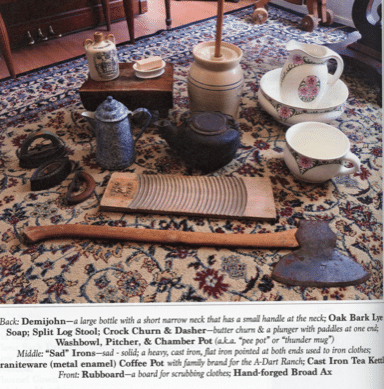
- Letters
- Kids’ Notes & Art Work
- Personal Daily Remembrance Notebook – A collection of snippets of your words of wisdom and memories. On each page of the book, include a thought or memory for each day of the year. Since each entry is only a few paragraphs, this is a very doable approach!
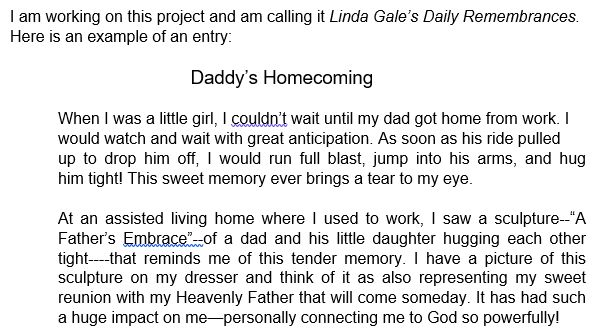
- Etc. !
NOTE: Be sure to add elements from this snippets list to break up long stretches of text. You can also insert headings (like the one below: Doable Snippets...” to break up text and to deal with content not being in chronological order. If you do want your text in chronological order, you can write content on index cards and then put the cards in the correct order when you are done.
Doable Snippets Approach Delivers You from the Dreaded “B” Word!
In my family history class, I passed out worksheets for a few of the above snippets ideas for class members to do in class. I passed out a U.S. map and had them fill in all the places they had lived. Next, I gave them a blank timeline to fill in with their vital statistics information they could remember off the top of their heads —birth, marriage, etc. Last, I gave them a page with a few questions to answer about their lives. It only took a short time but think about how much great personal information these three simple items contained. And it was easy!
At the end of my class, I handed out brad folders and asked the attendees to place their three worksheets in them. Then I grinned big and announced, “Surprise! I tricked you! Considering that the literal definition of book is ‘sheets of paper bound within covers,’ you now have officially begun your life story book--it’s in your hands!” The class members laughed. They were surprised and expressed gratitude for me giving them hope by showing them a way they could actually do this overwhelming task.
A Family Team: Interlocking Links
We have family members who have gone before us and those who are yet waiting to be born. Those who went before us paved the way, laid the foundation for our lives. These ancestors speak to us today in their journals and written histories. Their experiences can help lead our way—provide significant guidance. And our experiences can help lead the way for those who are now living and those who will come after us! Your precious loved ones seriously NEED a record of you personally to instill in them the life lessons you’ve learned–to equip them to be able to withstand the raging storms of life. The bottom line is your own life story will serve as an essential and powerful handbook of life for your loved ones--a valuable resource.
The “big” picture is we are all team players--in this together, meant to help one another! That is just what family does! So do your part and leave a paper trail!!
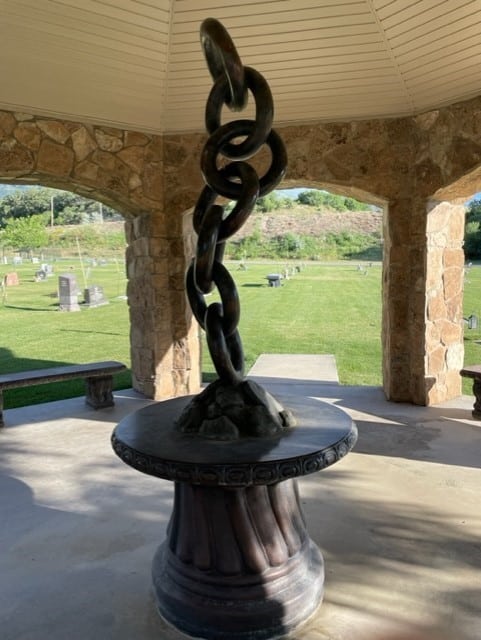 In a little cemetery near my home, there is a sculpture of a chain–each link represents a family member—including the living and the dead--and the interlocking links represent how we, the living, are solidly linked to the dead in our family. Death does not terminate the connection!
In a little cemetery near my home, there is a sculpture of a chain–each link represents a family member—including the living and the dead--and the interlocking links represent how we, the living, are solidly linked to the dead in our family. Death does not terminate the connection!
There is truly a special, powerful feeling that accompanies family stories. It has connected me to those who have gone before me in a profound manner I hope I can always keep in remembrance. I have been absolutely converted to the cause and want to press forward now to finally finish compiling and writing my own life story in doable snippets for my posterity’s sake—instead of being paralyzed by the dreaded “B” (book) word!
If you need help gathering information about your family and ancestors, the experts at Price Genealogy can help.
Linda
Most images were taken from the book "Lest We Forget" by Larry Richard Bowman with permission
